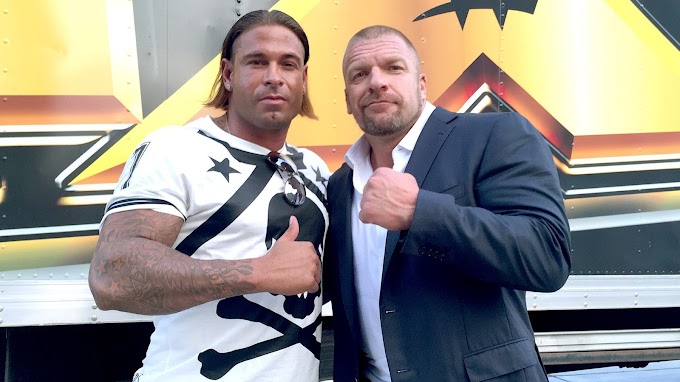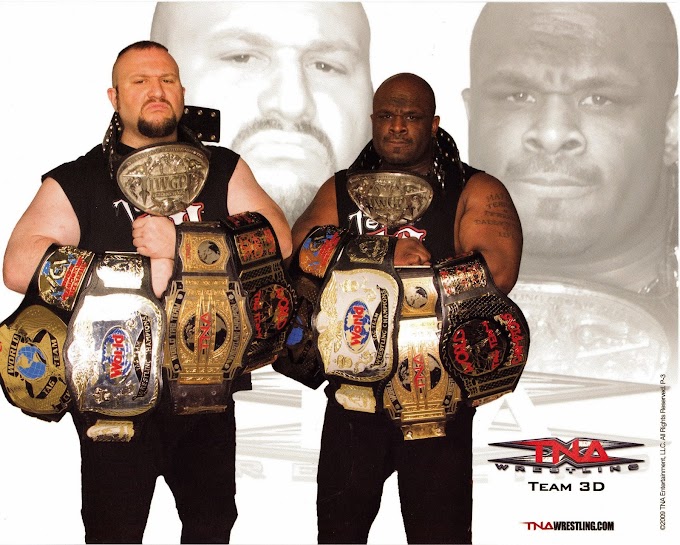Analyzing the Impact of a Neck Injury on a WWE Superstar's Career
For WWE Superstars, neck injuries are the snakes that can be chased away temporarily, but they will always return to sink their fangs into one's flesh.
Early retirement, an enslavement to prescription medications and the torment of pain often wait for wrestlers who undergo neck surgery. That's what is worrisome about Daniel Bryan's neck injury.
Daniel Bryan is doing well after neck surgery earlier today! #YESYESYES #WWE pic.twitter.com/I5rMpN1ZOs
— Wrestle Reaction (@Wrestle_React) May 15, 2014
WWE doctors performed "a cervical foraminotomy to decompress the nerve root," per WWE.com, on May 15. It's not the kind of major surgery that Steve Austin, Kurt Angle and Edge underwent, but one can't help but wonder if this injury will linger.
WWE's history is lined with Superstars who fell victim to the accumulative damage of trauma on their neck that comes with crashing headfirst into other men.
For Edge, neck injuries eventually led to him to have to retire at just 37 years old. He forced WWE fans to pay attention to him early on by leaping from great heights and employing a high-impact style that saw him do things like spear Jeff Hardy from off a ladder.
Moments like that are still fresh in fans' minds, but they damaged Edge's neck over time.
In 2003, as Greg Adkins wrote for WWE.com, "Edge underwent a two level spinal fusion of the discs between his C5, C6 and C7 vertebrae." He returned to action a year later, but wrestling continued to wear on his body.
Adkins adds that in the years after the surgery, "The Rated-R Superstar" suffered "a narrowing of the spinal column, above and below the fused discs." As Edge said himself in his retirement speech, he was "wrestling on borrowed time."
One can continue to glue pieces of a vase together, but it just can't hold forever. That's what happened to Edge's neck.
Eventually, it was no longer safe for him to continue to compete. His win over Alberto Del Rio at WrestleMania XXVII was his final match.
Neck injuries played a part in closing Austin's career as well.
At SummerSlam 1997, Owen Hart hit a piledriver on Austin that would impact him for the rest of his career. Hart inadvertently cracked Austin's head against the mat, turning the move from an element of theater to a life-altering blow.
Through the kind of will that only seems possible in movies, Austin finished the match. He pinned Hart and with the help of referees was able to stand and receive the Intercontinental Championship.
The temporary paralysis went away, but neck issues persisted.
In 2000, Austin had to have surgery. Dr. Stephen A. Shoop and Mike Falcon explained in USA Today that the procedure was to "correct a combination of a bone spur protrusion and spinal disc protrusion in his mid-neck area."
He would wrestle his last match three years later.
Angle's neck issues began even before his WWE debut.
Fox Sports' Reid Forgrave wrote that Angle "fractured two of his cervical vertebrae and herniated two of his discs" before the 1996 Olympics. Somehow, he not only managed to compete, but he won a gold medal.
WWE came calling soon after. Two years after wearing a gold medal around his broken neck, he was training to make the transition from the amateurs to the pros.
Not surprisingly, neck injuries began to reemerge. Not only did he begin an unforgiving career with a surgically repaired neck, his in-ring style put extra strain on his body. Angle wrestled hard, flinging his opponents over his head several times a match.
By the time he was set to face Brock Lesnar at WrestleMania XIX, he didn't have full strength in his arms and was gutting it out every night.
"Angle entered the match with a badly degenerated neck," per Wade Keller of PWTorch.com. Surgery followed, as did an insanely short recovery time. As WWE.com notes, Angle was back in the ring just 14 weeks later.
He has managed to avoid early retirement. He still wrestles for TNA today, but addiction cost him his spot with WWE.
The glut of pain that comes with heading to the surgeon's table as often as he has led to Angle gobbling painkillers. Chris Schramm of Slam! Sports wrote, Angle "started with regular doses but later was up to 65 a day. The mix of Percocet, Vicodin, Norco and Lorcet would be one of the factors that cost Angle his job with the WWE in 2006."
Eventually, Angle announced he was entering a rehab center.
I am blessed to have the support of my family, my friends and my company. In light of recent events I will immediately be entering a
— Kurt Angle (@RealKurtAngle) August 3, 2013
rehabilitation center. I realize that this is a pivotal time in my life and I ask for your understanding as well as your prayers and
— Kurt Angle (@RealKurtAngle) August 3, 2013
continued support. I am confident that in taking these steps I can begin to address necessary changes in my life.
— Kurt Angle (@RealKurtAngle) August 3, 2013
There have been more successful stories than those, though. Rhino recovered from neck surgery in 2001 and went on to compete for several years. John Cena underwent neck surgery in 2008 and is still one of WWE's most prominent and hard-working stars.
If Bryan is lucky, his stories will mirror those more. It would be even better, of course, if fusion surgery never comes his way and that this neck surgery is his last.
Adjusting his style so that he's not suffering so much impact to his head and neck is key to avoiding more trips to the operating table. Even if he does, though, there's no guarantee that his neck issues won't return.
Pro wrestling is a dangerous business and as Triple H told The Masked Man on Grantland, "getting ready to wrestle is like getting ready for a car crash."
For men like Austin, Edge and Angle, that has meant struggling to rip an albatross from around their necks.






.jpg)





